After three nights at Sugar Beach, the next destination was Apo Island, where snorkelling can be enjoyed.
We decided to stay one night near Malatapay, 45 minutes before Dumaguete, and cross to Apo Island from there the next day.
To get to Malatapay from Sugar Beach, you have to go to Hinoba-an and then change buses.
- Getting out of Sugar Beach, Heading to Sipalay
- Bus journey from Sipalay to Hinoba-An
- Bus journey from Hinoba-an to Bayawan
- Bus journey from Bayawan to Zamboanguita
- Overnight in Zamboanguita
- Transfer to Malatapay boat Terminal
- Waiting for the boat to Apo Island at Malatapay Boat Terminal
- Boat Journey to Apo Island
- Arriving at Apo Island
Getting out of Sugar Beach, Heading to Sipalay
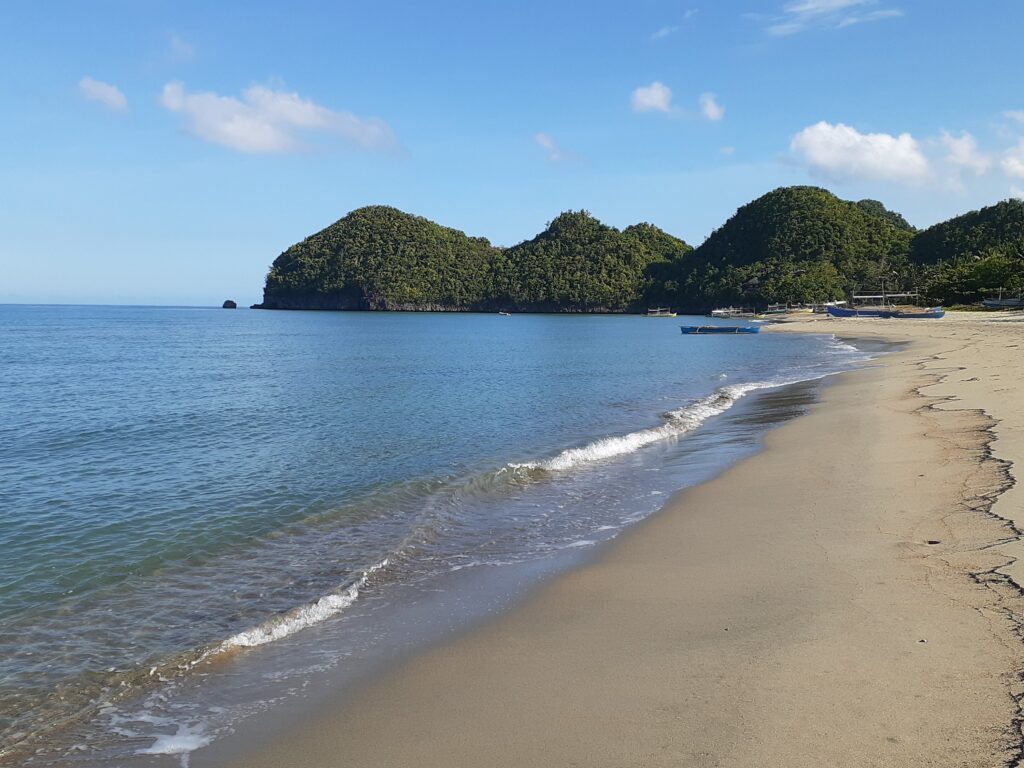
Sugar Beach is a lovely, white sand beach located a few kilometres from Sipalay.
We took a bus from Bacolod to the Gil Montilla market, from where we reached Sugar Beach by pedicab (Moto tricycle).
Luckily, we were able to get from Gil Montilla Market to Sugar Beach for the local price of 25 pesos per person, but the road out of Sugar Beach to Gil Montilla or Sipalay was not so easy. It was a ‘good going, bad coming back’ situation.
Cost of travelling from Sugar Beach to the nearest town
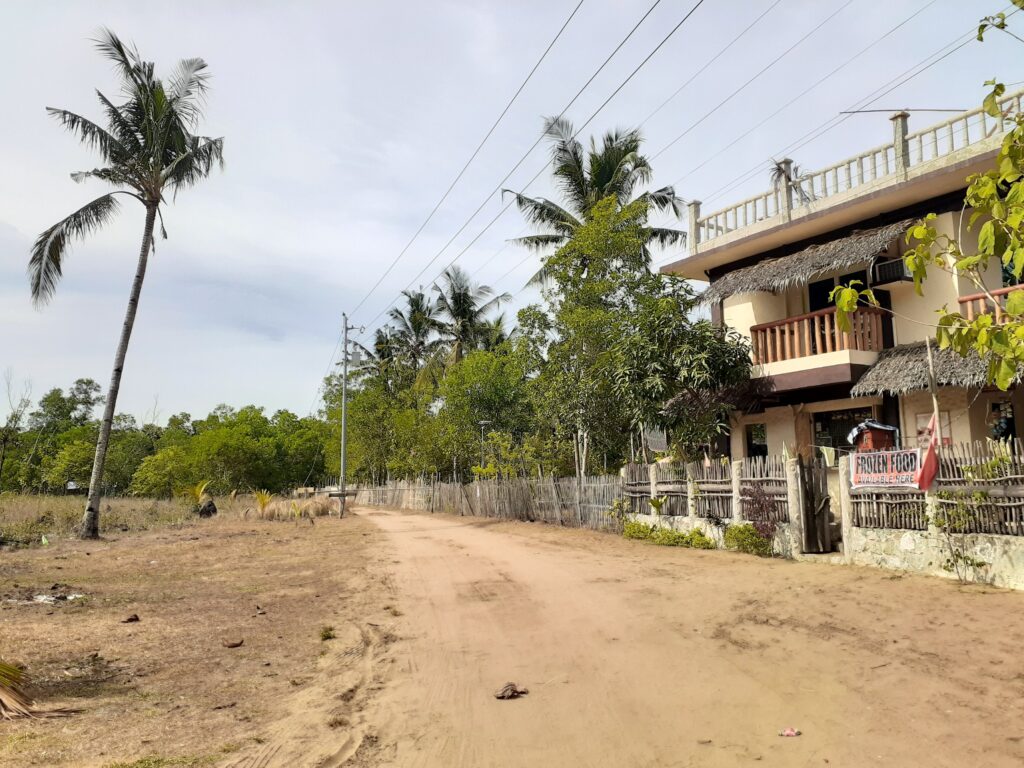
The guesthouse told us that it costs 150 pesos per person to get a pedicab (a taxi with a seat attached to a motorbike) from Sugar Beach to Sipalay. If you want to go to Gil Montilla, it would cost 100 pesos per person. Both of these prices were much higher than what we paid on the way in.
Next, we asked at a restaurant and shop near the guesthouse how much it would cost, and were told that it would be 300 pesos for two people, whether to Sipalay or Gil Montilla. This seems to be the fixed tourist price.
On this day, we wanted to change buses at Hinoba-an to get to Malatapay. To do this, we needed to catch a bus to Hinoba-an at the Gil Montilla market or at the Sipalay bus terminal.
It is more than 10 km from Sugar Beach to Sipalay, but only 5.7 km to Gil Montilla Market. It is a hard distance to walk with luggage on your back, but not impossible to walk, as we just have daypacks. So we decided to walk away from Sugar Beach and see what transport we could find on the way.
If you want to travel for a fair price, I would recommend walking out of Sugar Beach first.
Walking out of Sugar Beach
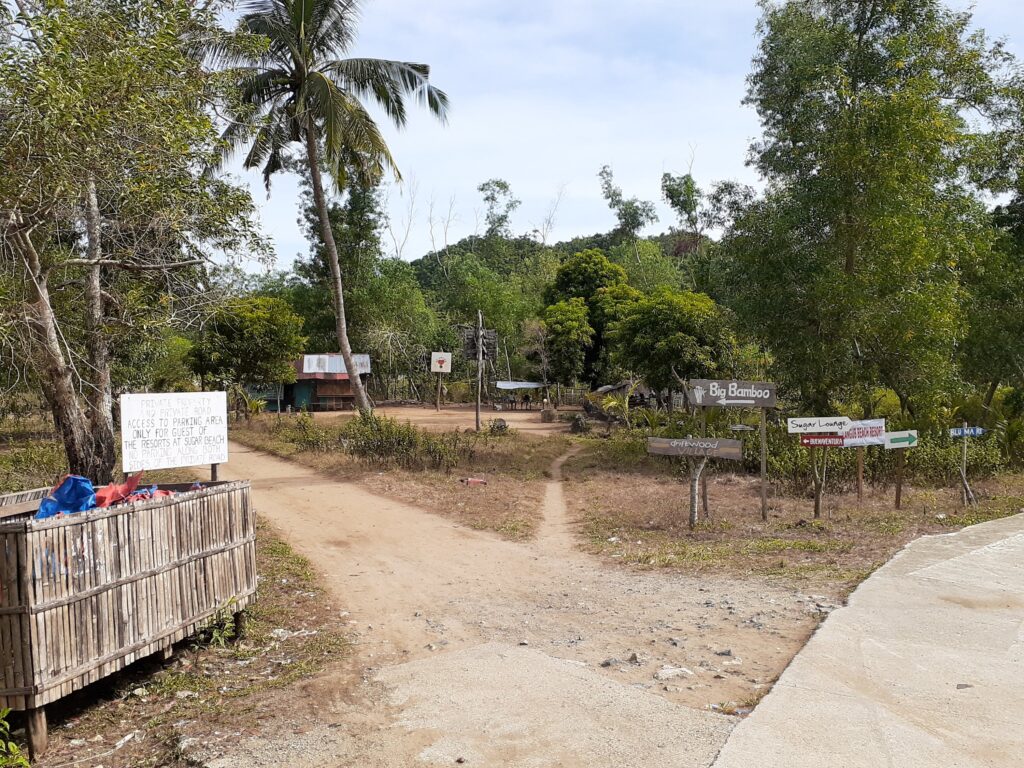
From the Sugar Beach car park, we started walking back the way we had come by pedicab a few days earlier. It was 8:40 am and the temperature was still not too hot and it seemed unlikely to rain either.
We walked about 500 metres abd came to a house, where we saw a pedicab parked in front of it. A young man came out from inside.
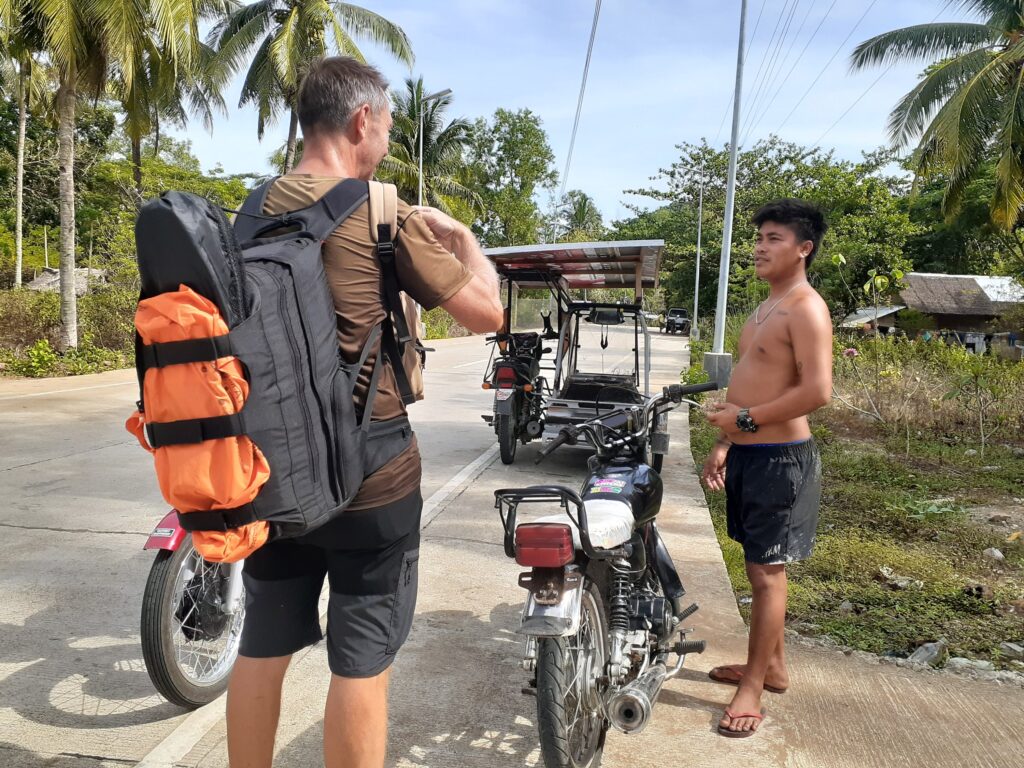
When I tried to negotiate the fare to Sipalay, another man came on a motorcycle from the direction of Sugar Beach.
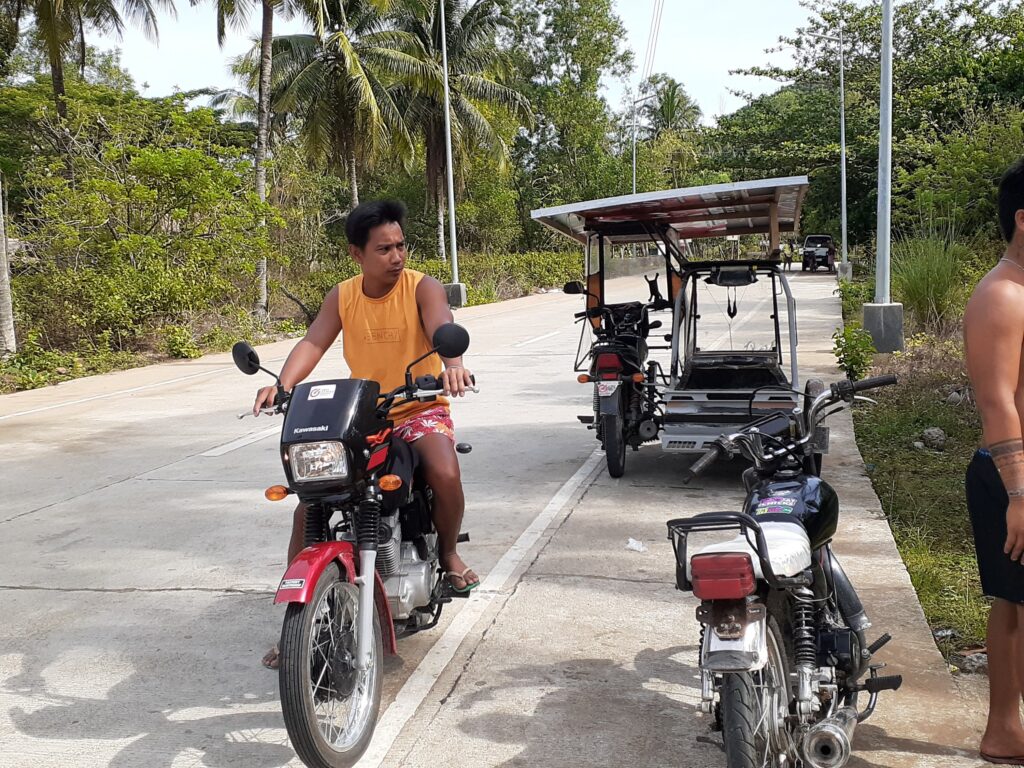
This man did not smile or greet us, and we felt he was silently putting pressure on the pedicab driver. When we asked how much it was to Sipalay, the man on the motorcycle, not the pedicab driver, replied that it was 300 peso and to the Gil Montilla market 200 pesos for two people. Apparently there is a transport mafia in Sugar Beach as well!
How to get from Sugar Beach to Sipalay at a low price
Negotiations break down. We thanked the driver man and we started walking again.
Just before the concrete bridge, up a gentle slope, we saw a single pedicab coming from the other side. There was no one in the passenger seat, so we stopped and started negotiating the price.
We then agreed that the driver would take us to the bus terminal in Sipalay for 150 pesos for two people. I show them the cash and confirmed that it was 150 pesos in total for two people, not per head, and we got in.
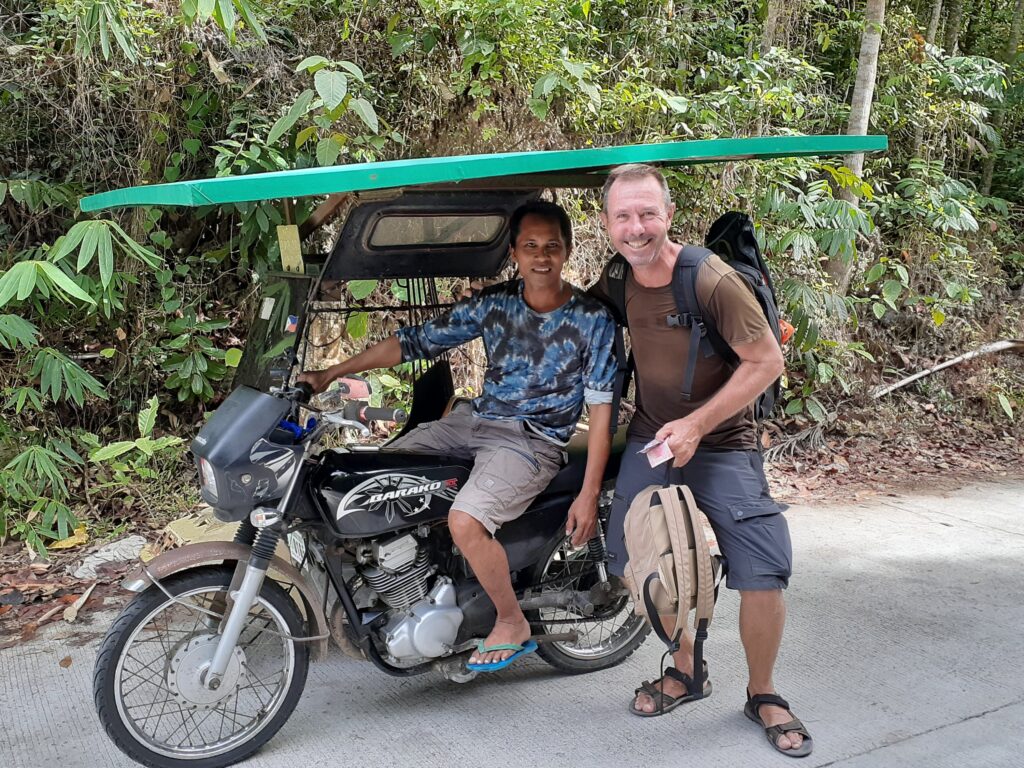
The road to Sipalay took about 30 minutes, as there were many unpaved sections and some detours due to road works. Moreover, when we were driving on the paved road to the bus terminal, we passed a bus bound for Hinoba-an. We had just missed the bus.
Bus journey from Sipalay to Hinoba-An

As soon as we arrived at the bus terminal, we asked at the booth next to the waiting area, and found that the bus had in fact just left. The next bus was scheduled to depart at 10.30am, so we had an hour or so to kill, so we went to a nearby market to get some food.
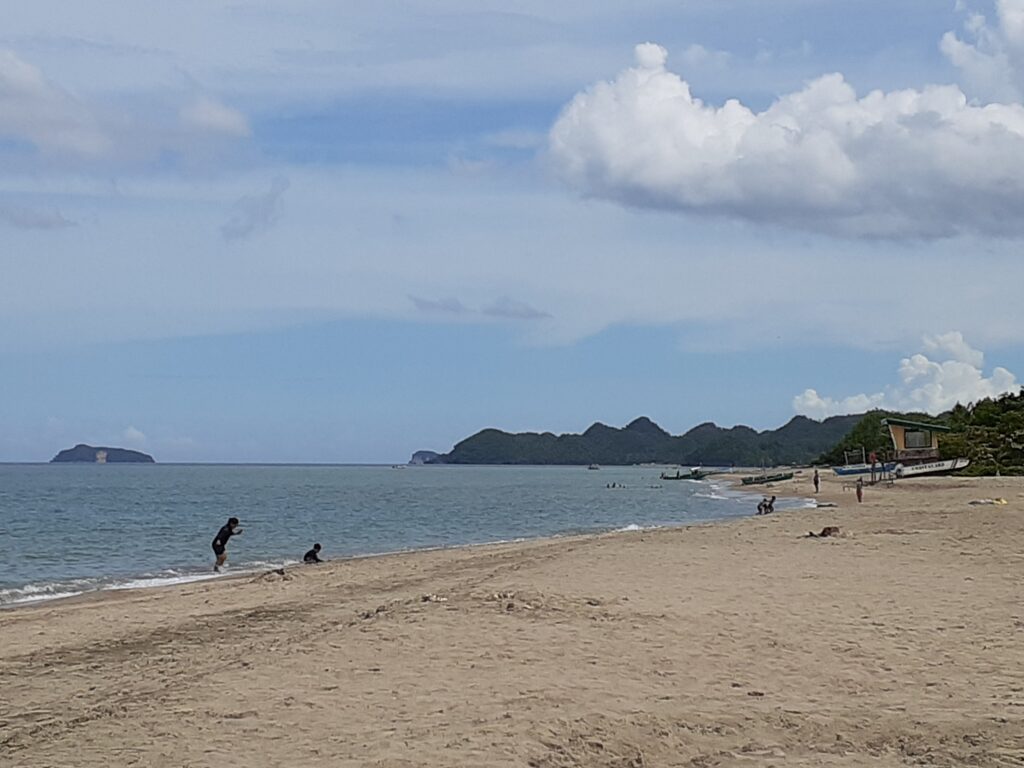
After buying food and water, we went to Sipalay beach for a photo shoot.
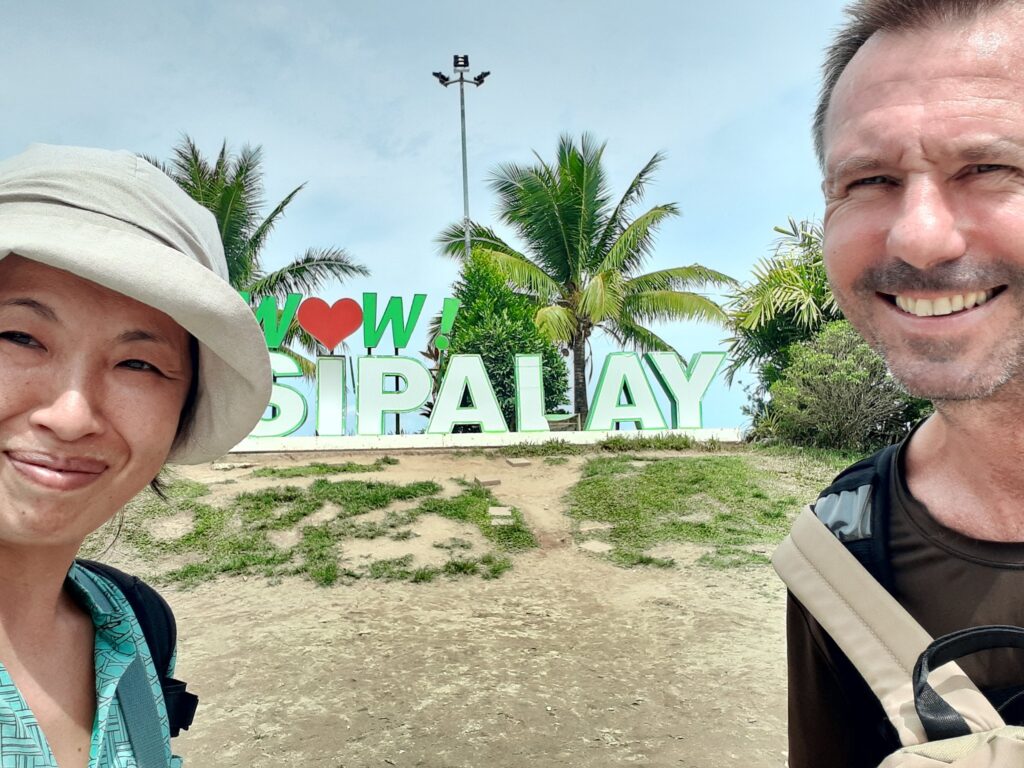
After returning to the bus stop to use the bathroom and wait for a while, the bus from Bacolod arrived.
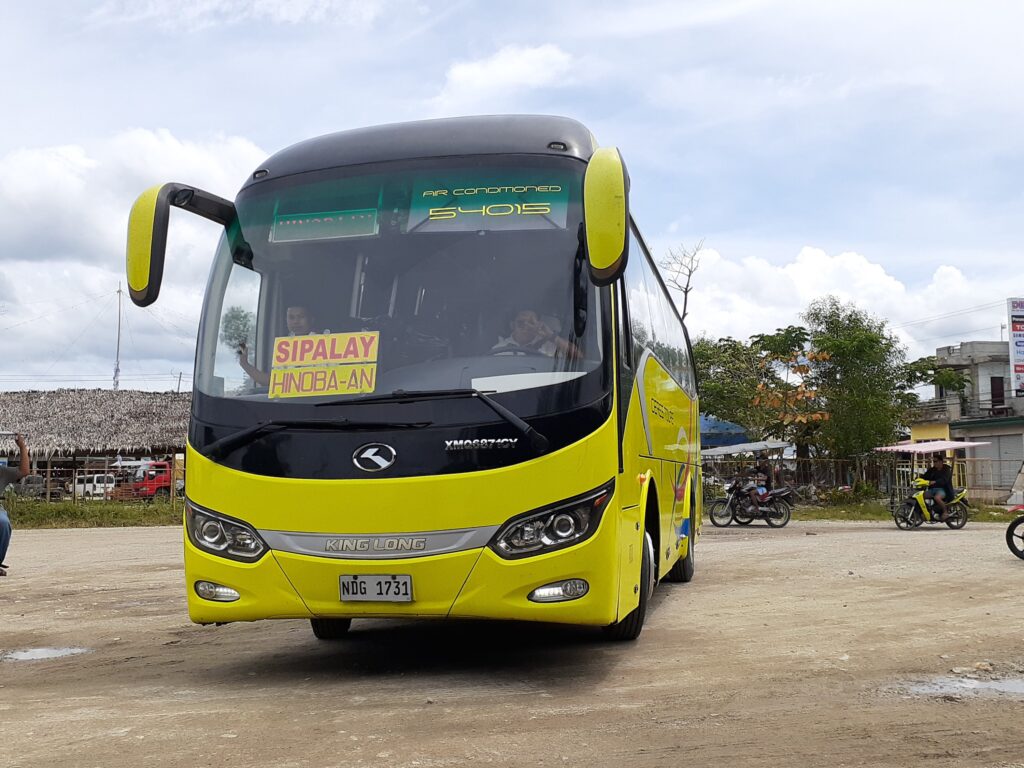
The fare from Sipalay to Hinobaan was 57 pesos per person. The journey to Hinobaan is about 40 km and took about one hour. The bus left the Sipalay bus terminal at 10:30 am and arrived at the Hinobaan bus terminal at 11:20 am.
Bus journey from Hinoba-an to Bayawan
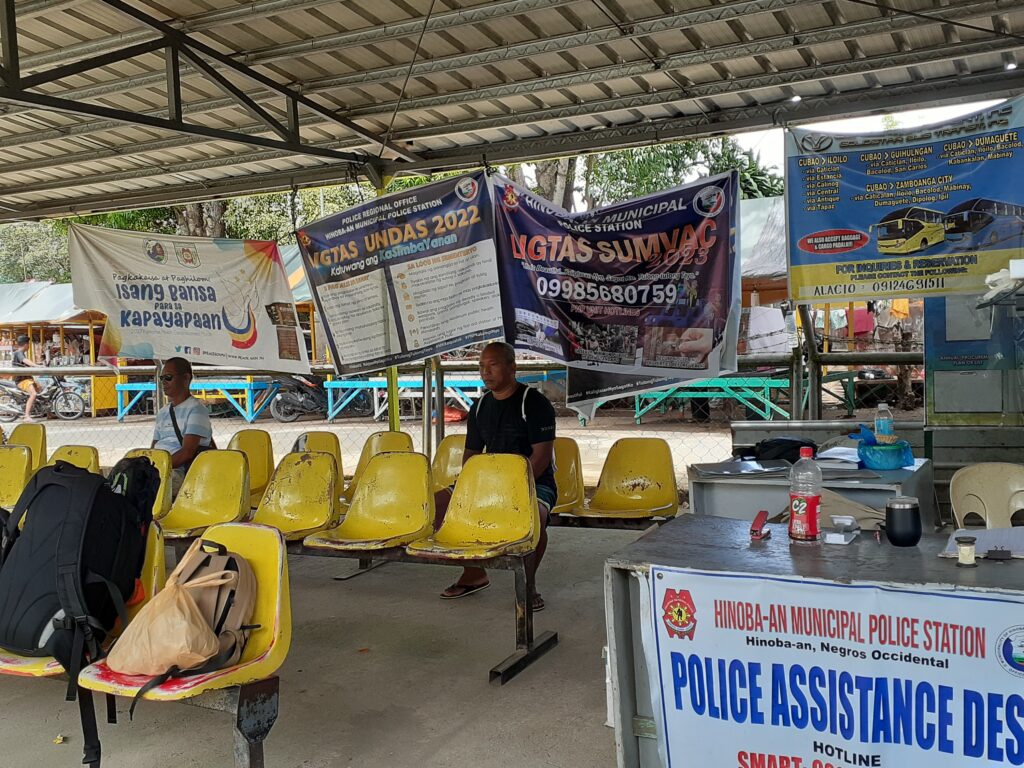
From Hinoba-an Bus Terminal, we were told that we had to transfer to a bus bound for Dumaguete and change buses again at Bayawan. We were told that buses from Bayawan then leave every 15 minutes for Dumaguete.
Presumably, after Bayawan, this bus would run along the mountainside to Dumaguete, rather than along the coast. The next bus to Dumaguete would leave at 12:00.
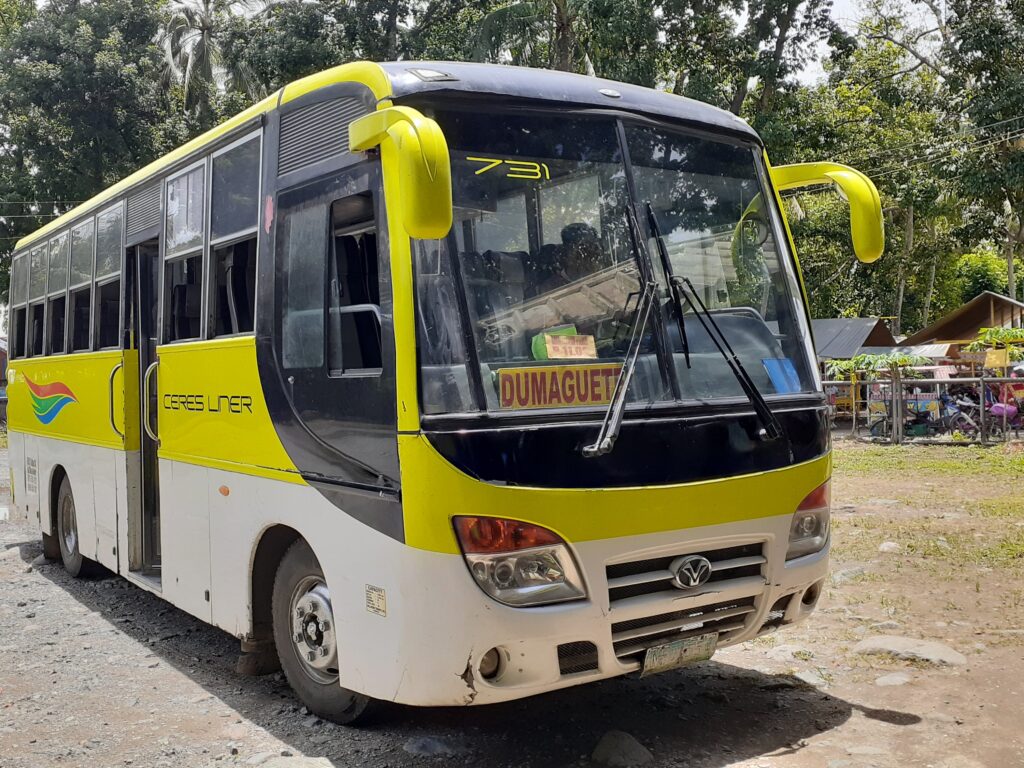
The bus to Dumaguete was already at the terminal. It is about 50 km from Hinoba-an to Bayawan, so about one and a half hours. The fare from Hinoba-an to Bayawan is 108 pesos per person. For a bus without air conditioning, it seemed rather expensive considering the previous ticket price.
The bus departed Hinoba-an at 12.00 pm as scheduled. It took a long time for the distance due to frequent stops for passengers getting on and off the bus. It was around 1:30pm when we arrived at the bus terminal in Bayawan.
Bus journey from Bayawan to Zamboanguita
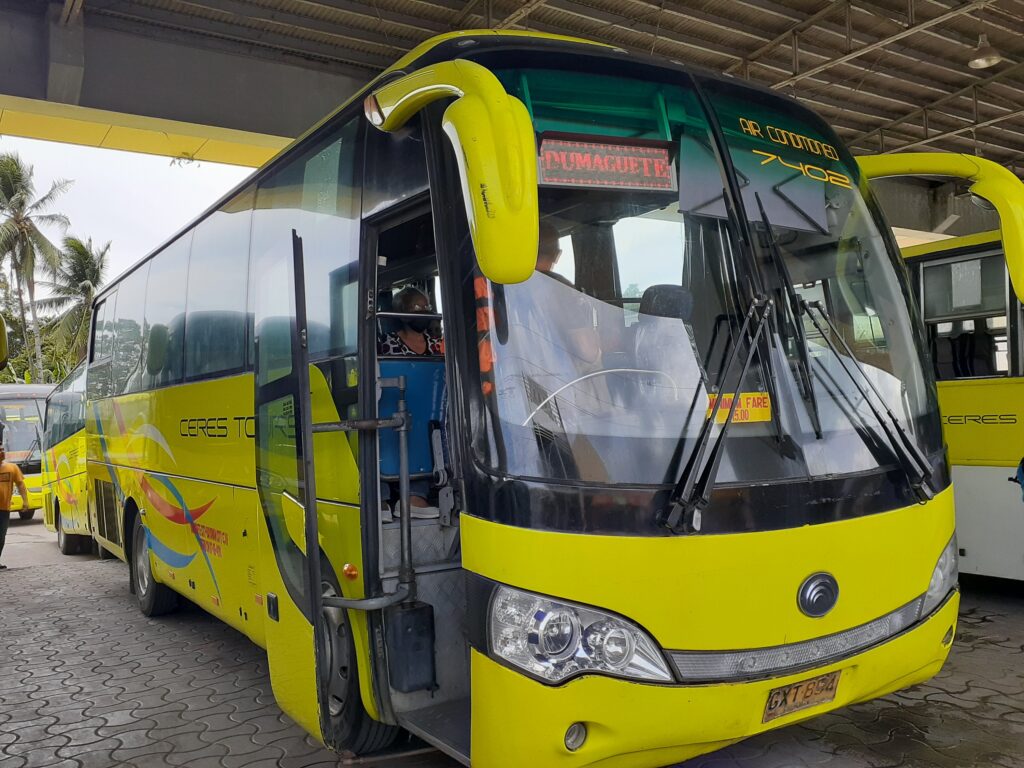
When we arrived at Bayawan Bus Terminal, the bus to Dumaguete was already there. After confirming that the bus would go through Malatapay, we boarded the bus and it left immediately.
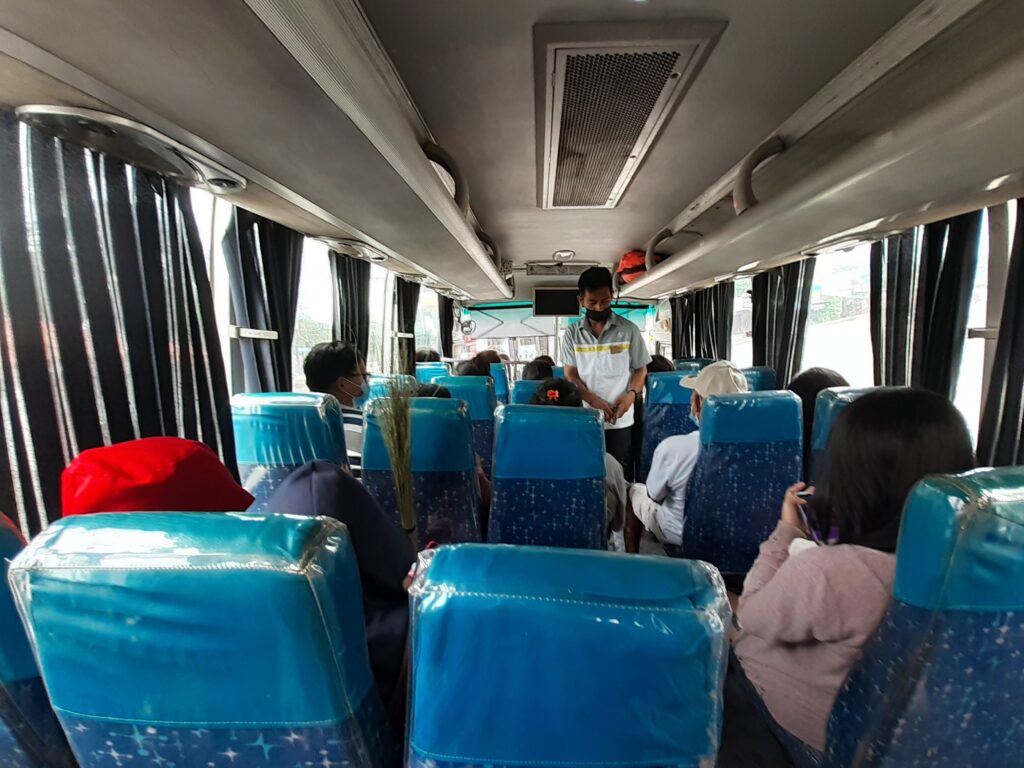
The bus was air-conditioned and had three rows of seats on one side and two rows on the other. We told the conductor where we were going and bought our tickets. The hotel we booked was on the edge of the town of Zamboanguita, just before Malatapay. We paid 169 pesos per person for the fare to that vicinity. The distance was approximately 75 km.
Overnight in Zamboanguita

More and more people started to get on the bus from the town before Zamboangita and the bus was more than full. So it took a bit of time for us to get off, but we managed to get off near the hotel we had booked.
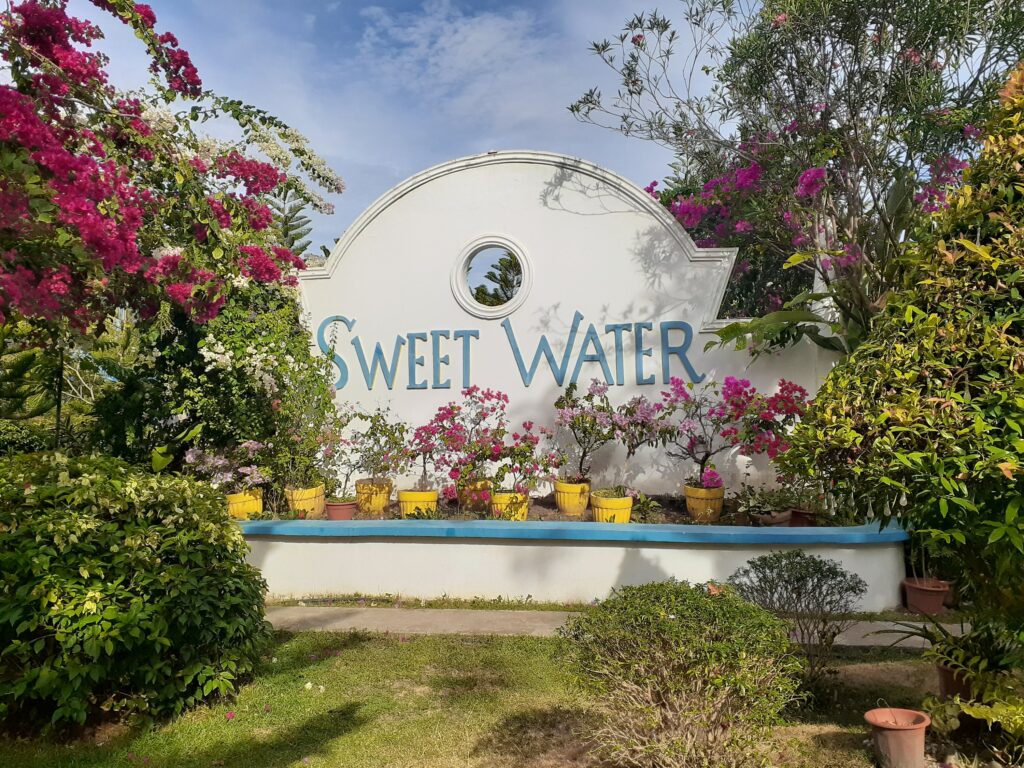
We walked a few hundred metres and checked into the hotel. It was Sunday, but the next day was 1 May, Labor Day, which is a public holiday in the Philippines. The fact that it was during a holiday weekend made the room rate a little more expensive, but we chose the hotel because it was just over 3 km from the harbour where boats leave for Apo Island.
The next morning we finally crossed to Apo Island by boat.
Transfer to Malatapay boat Terminal
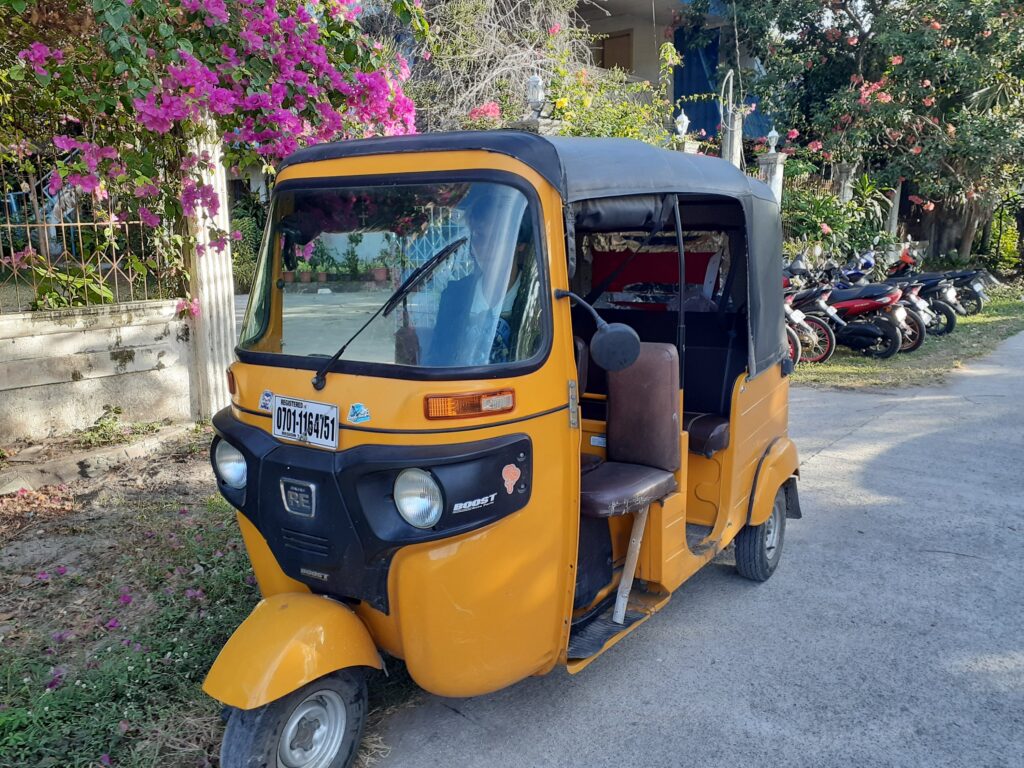
When I asked the owner about the boat to Apo Island the night I stayed at the hotel, he told me that tourists who want to go to Apo Island gather at the boat dock from around 7am, so if you want to share the boat, you should go to the dock early. There are also public boats from Malatapay to Apo Island, but information is mixed and unclear, with some saying that there is only one boat a day and that it leaves between noon and 3pm.
We were informed that chartering a boat to Apo Island would cost 3,000 pesos per boat, which is not reasonable for us.
So the next morning we decided to follow the hotel owner’s advice that it would be better to be at the boat landing at 7am. We planned to walk from the hotel to the boatyard as it is 3.3 km away, but the owner offered to give us a tuk tuk for free.
The next morning, a hotel employee came to our room at 6.45 am and drove us to the boat landing at Malatapay.
Waiting for the boat to Apo Island at Malatapay Boat Terminal
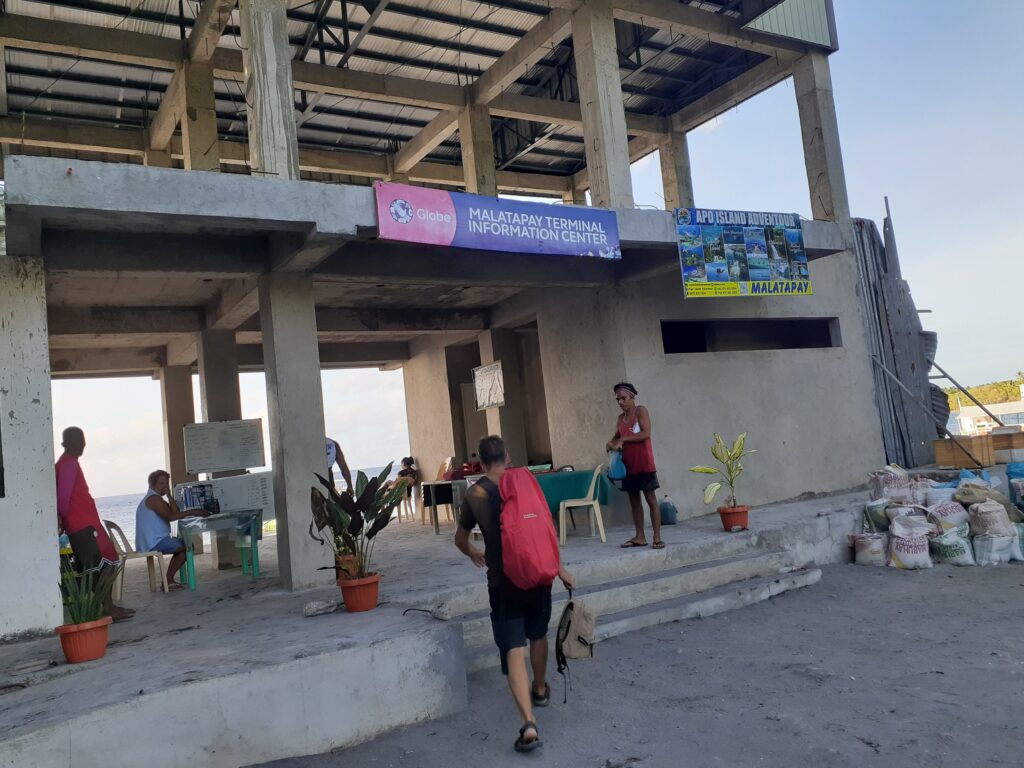
It took just over five minutes to get to the landing and warrived just before 7am.
When we arrived, a woman was sitting at the desk and this person seems to be the person who arranges the boats. Beside her were two whiteboards with a price list for charters and a list of names of boatmen.

When we told her that we both wanted to go to Apo Island and that we planned to stay overnight on Apo Island instead of taking a day trip, she told us that the shared boat would cost 500 pesos per person each way.
One Filipina woman had arrived before us and she too was waiting for the shared boat. While waiting, we were prompted by a woman sitting at another desk to enter our names in a notebook. A terminal fee of 5 pesos per person was also collected.
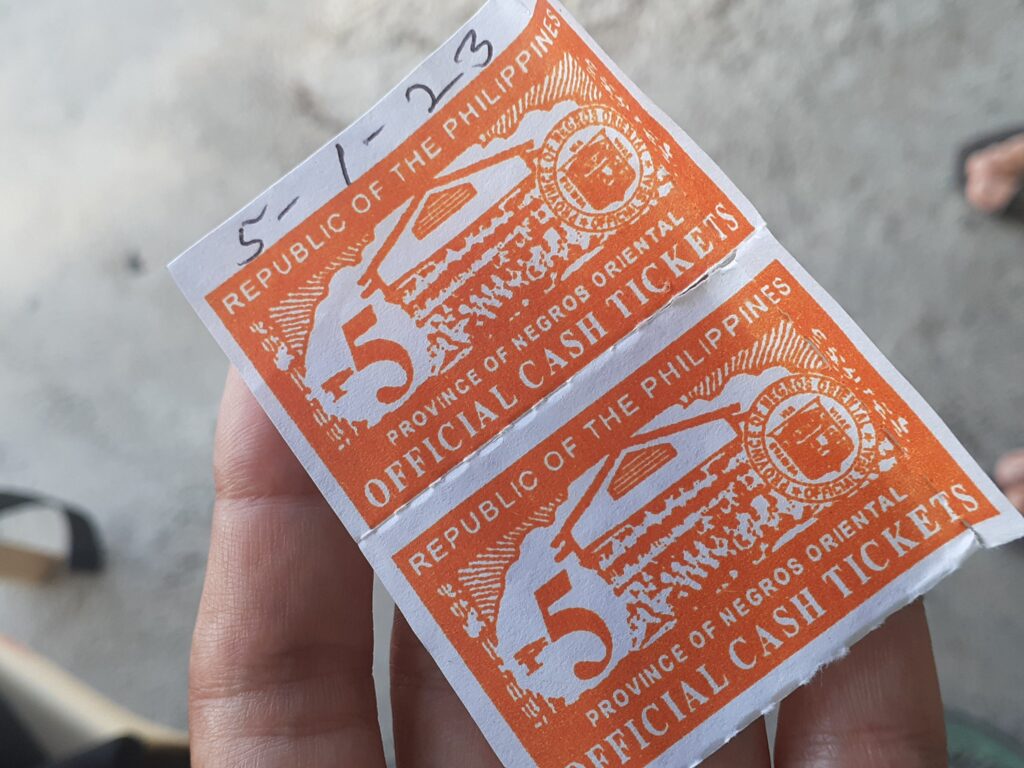
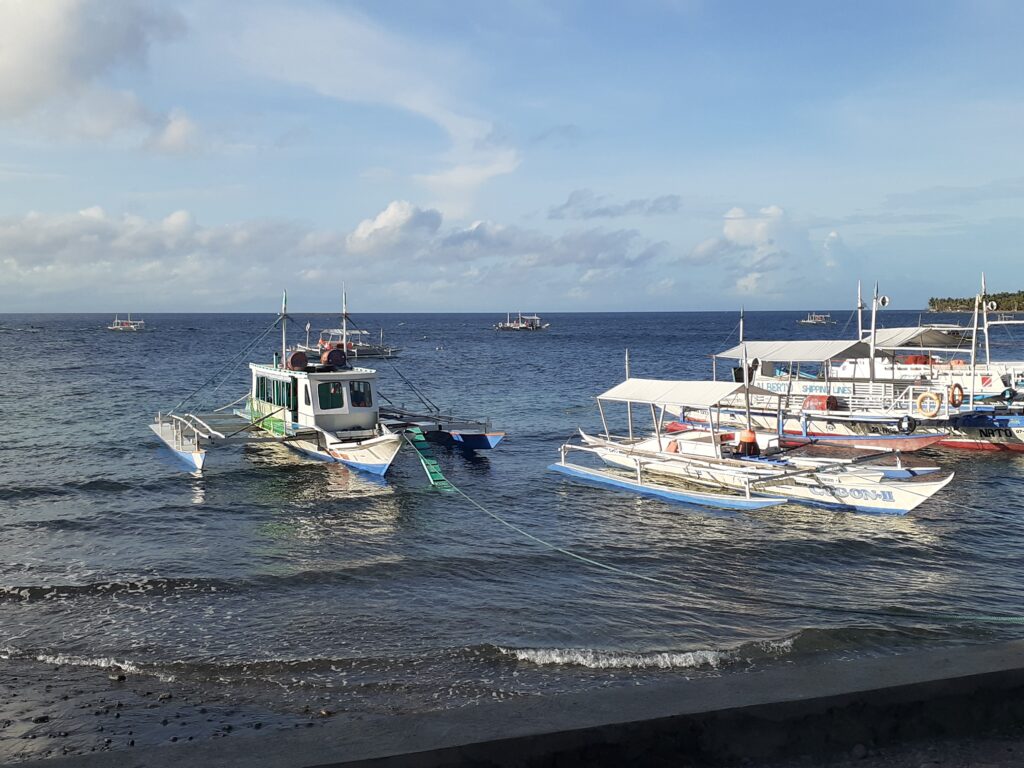
Now we just had to wait for other passengers to gather.
Most people go to Apo Island on a day tour from Dumaguete, but you can also stay near Malatapay and take a day snorkelling trip from the boat dock.
If you take a day tour from Maratapai boat pier by shared boat, the boat fee is 500 pesos per person for a one-way trip like ours, and the remaining boat fee is divided by the number of people taking a day trip (round trip).
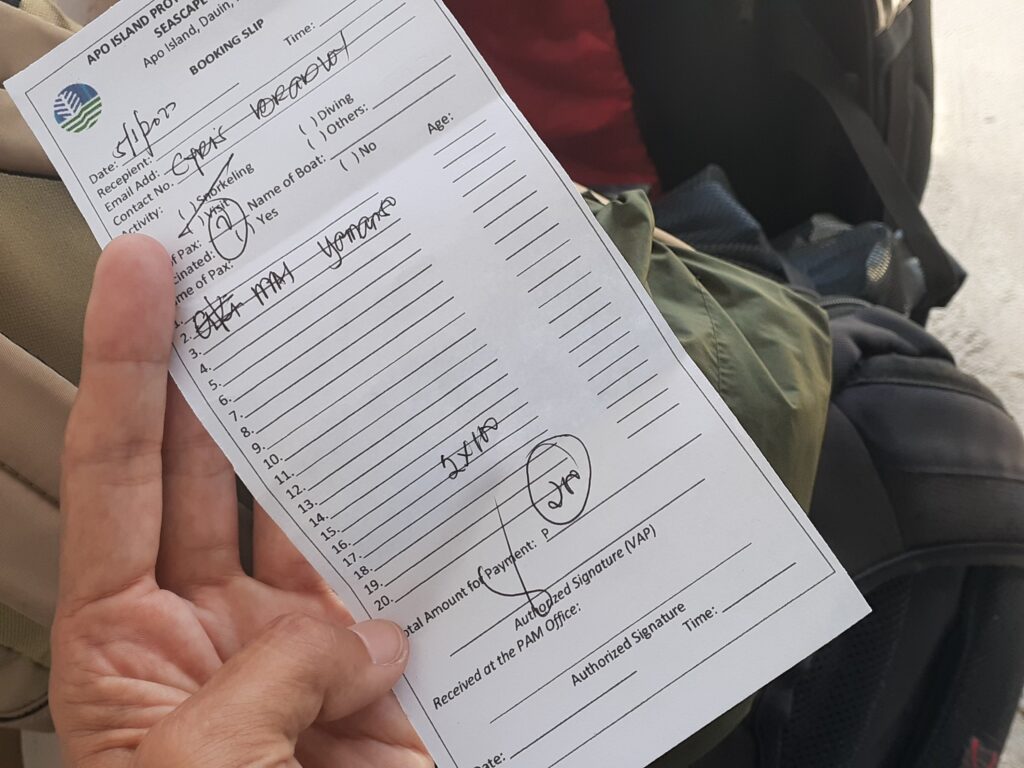
Apart from the boat and pier fee, you must also pay 100 pesos per person to enter Apo Island. You are given a piece of paper like the one in the image above and told to take it to the office to pay when you land on Apo Island.
Then, about an hour after we arrived at the landing, another passenger arrived and we were allowed to board the boat.
Boat Journey to Apo Island
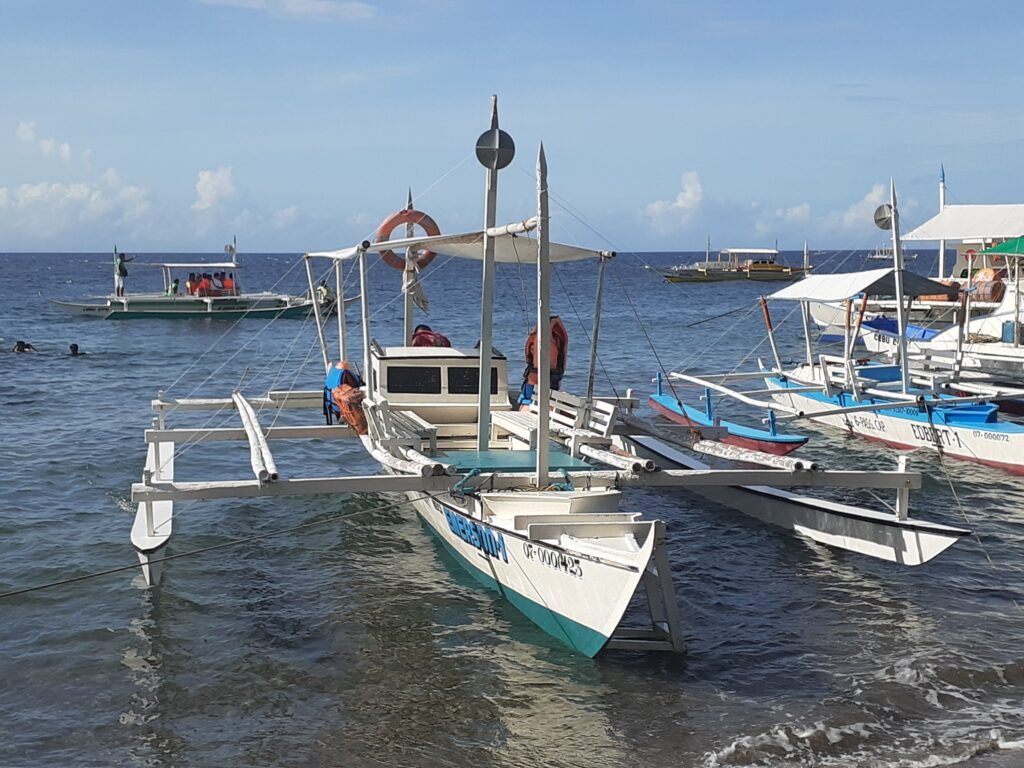
After the woman in charge told us that the passengers had gathered and the boat would be leaving, we waited for another 10 minutes before leaving.
We followed the boatman and boarded the boat. The boat to Apo Island is a small boat like the one in the picture, and it splashes a lot, so you will definitely get wet. So at this point I put on my raincoat and Chris put his valuables and devices in a waterproof sealed bag.
Even though this is a landing place, the boats are just pulled up on the beach and you have to walk knee-deep in the water when you board. The same applies when getting off. Wear clothes you don’t mind getting wet and protect your devices and any other valuables from the sea water!
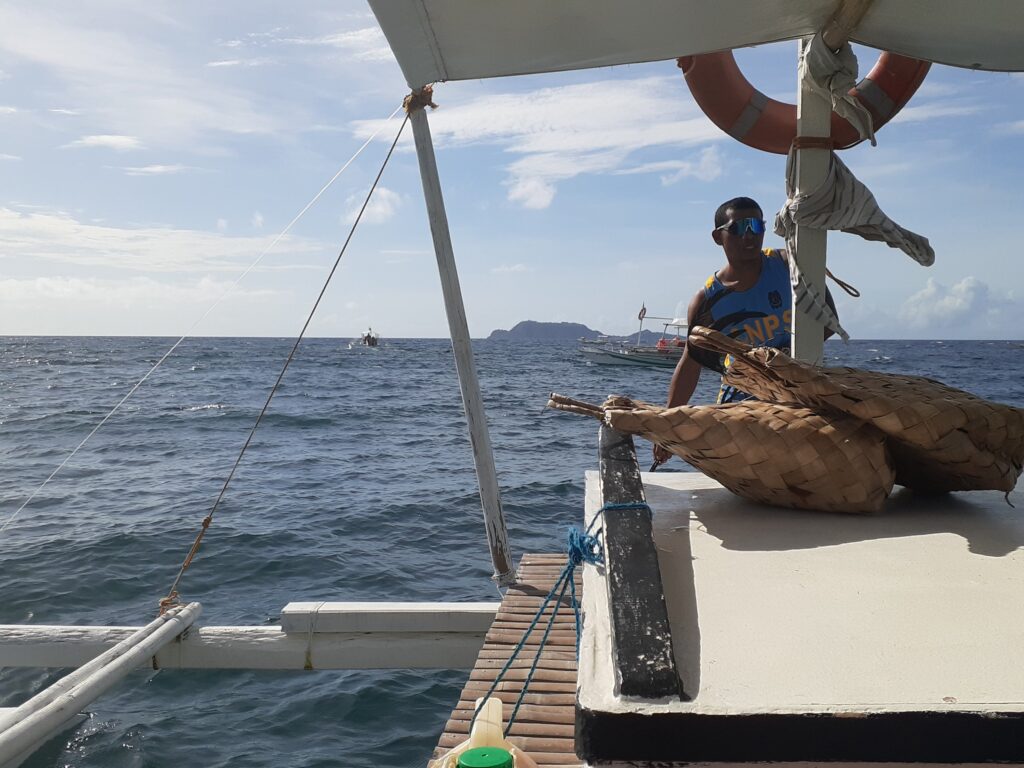
Finally, it’s time to go. The boat is moving at a snail’s pace and the water splashes into the water. Our backpacks were stored where they wouldn’t get wet, but the passengers are very wet!
Arriving at Apo Island
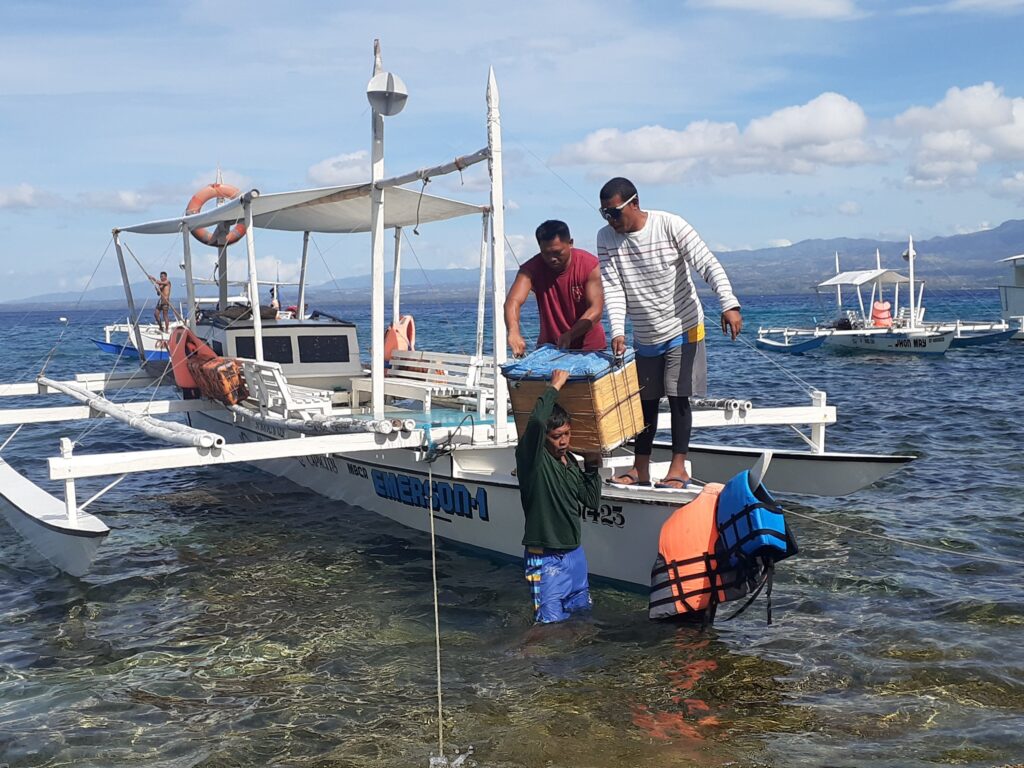
We left the landing stage at around 8am and arrived at Apo Island at 8:50am.
On arrival at Apo Island, we were still knee-deep in water and had to walk on the rocky shore.
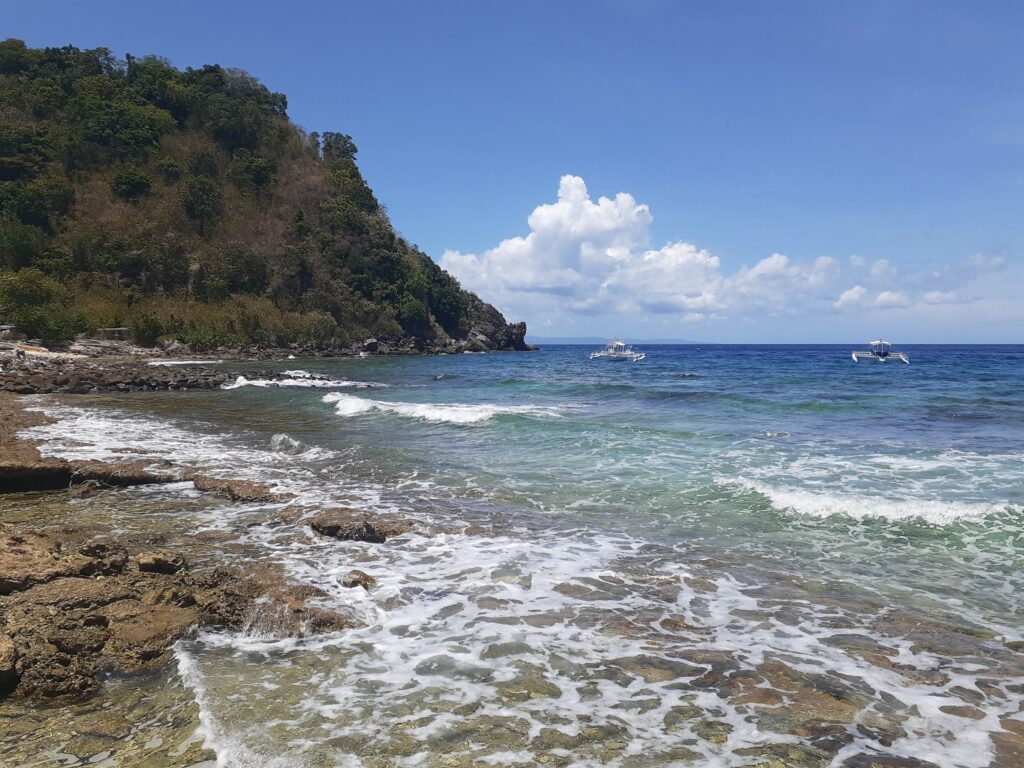
As soon as we arrived at Apo Island and started walking, we were asked to pay the landing fee at the office before heading to our homestay.
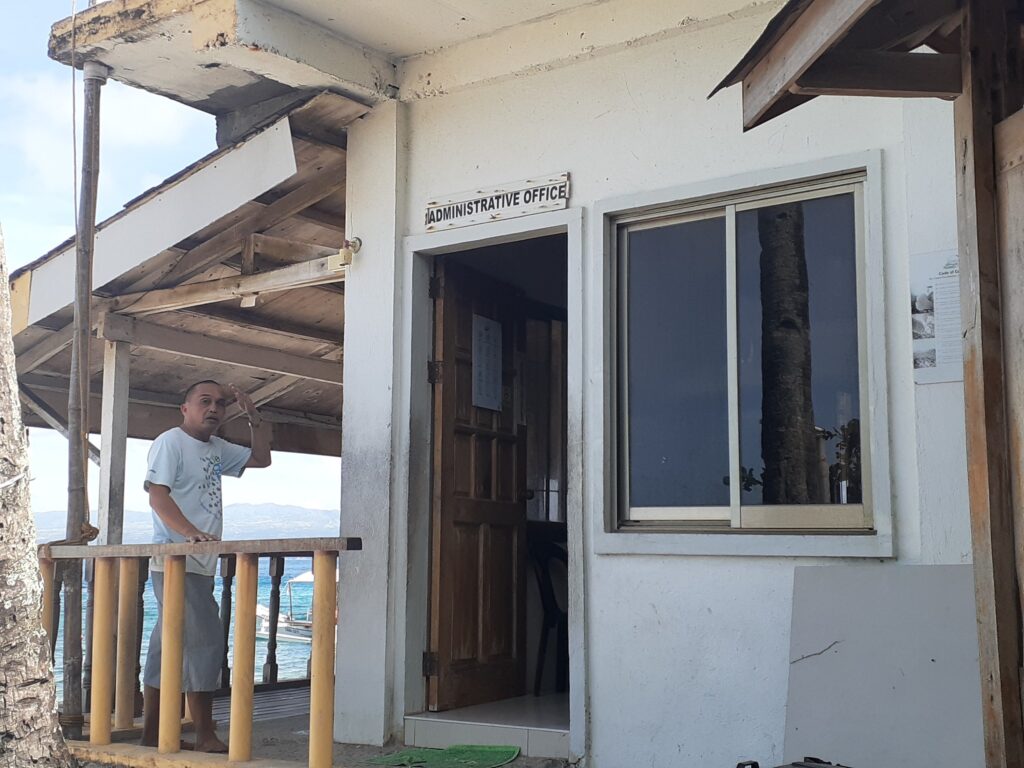
Apo Island is a protected area and you have to pay 100 pesos per person as an entrance fee.
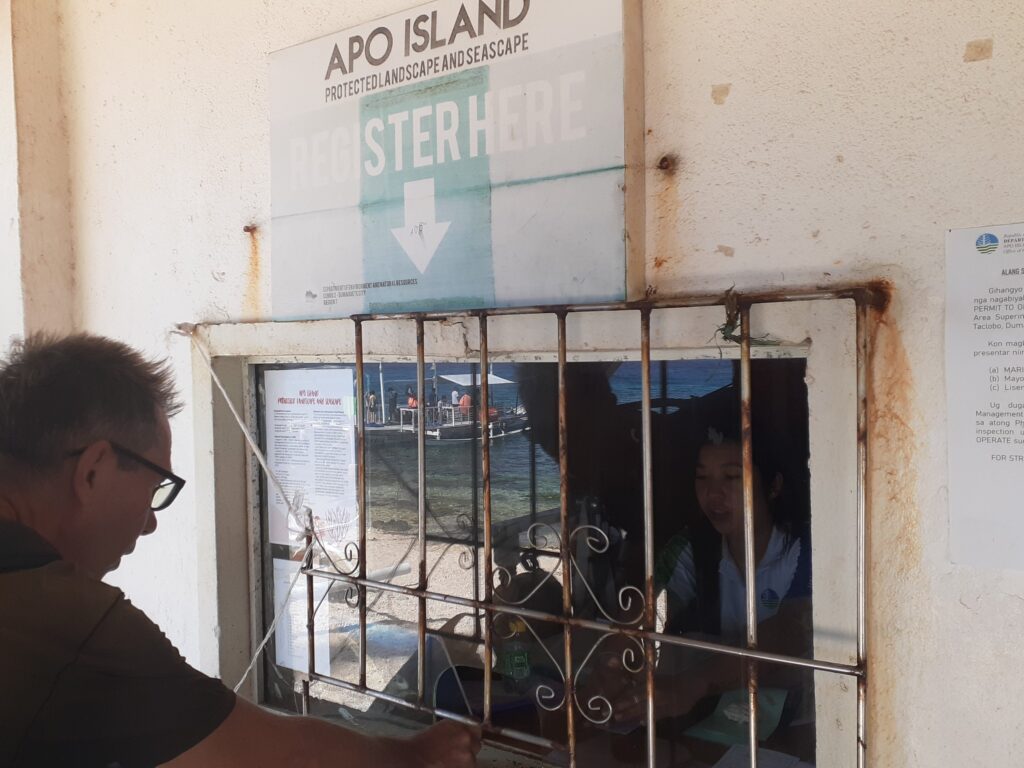
The Apo Island entrance fee payment booth is located on a sea-side balcony, where you pay the fee by taking out the entrance fee paper you received at the landing. You will get a receipt instead, and then you can enjoy Apo Island.



Comment